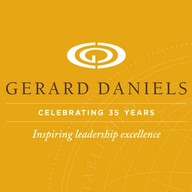People are strategically critical to any organisation, and there is significant investment in solutions to guide people performance, culture and development. Yet, despite the specialist ability and positive intent of the HR professionals that design and deliver these solutions, the majority are not implemented, or simply do not deliver.
Here Barry Bloch, Global Partner for Board and Executive Leadership, explores why people strategies often fail, and the important dynamic that exists between people and organisational strategy.
People strategy vs. organisational strategy: what determines success?
For people to contribute to organisational success, leaders must first understand the synergy between people and organisational strategy. “People are essential to achieving business strategy – but people are not the strategy in themselves,” Barry explains. “People strategy and organisational strategy must not be separate, instead the emphasis should be on delivering people solutions as part of the wider organisational strategy.”
Another critical success factor in people strategy, is for ownership to be taken by leadership. Again, for this to be achieved, people must be seen as an integral part of organisational strategy, not as the strategy itself or a stand-alone consideration.
“Many organisations fall into the trap of asking what their people strategy is, when they should be asking what the people assumptions are in their overarching organisational strategy,” says Barry. “Without an effective, implementable and sustainable set of people solutions within and underpinning the organisational strategy, the performance and wider strategic effectiveness of the organisation is significantly at risk.”
From employee lifecycle to organisational and market lifecycles: an inconvenient truth
To contribute to organisational success, people solutions should be governed by the lifecycle of the organisation and the economic markets that it is competing in, not the lifecycle of the employee.
“We still see highly specialised and capable HR professionals applying the conventional wisdom that people strategy is about people systems, processes and co-ordination, mostly around the employee lifecycle,” Barry says. “It’s time to move away from what can be seen by leaders and employees as industrialised people processes, towards strategically leveraging individual, team and organisational performance and potential. And rather than being led by HR, the Executive leadership team needs to define these people solutions that will deliver on the overarching strategy and performance of an organisation.”
“For example, if your organisation is young or entrepreneurial and/or your markets are fast moving and highly competitive, you will need a very different set of people solutions to guide performance and potential, than if your organisation is antiquated, has plateaued, or if your markets are static or highly controlled,” he continues. “Essentially, people solutions should serve to take you forward, (or back) to your best performance and potential as an organisation, depending on where in the organisational lifecycle and economic marketplaces you are.”
Making people intrinsic to organisation strategy – not an add-on
Within any organisation there are some strategic levers that are intrinsically people based, and non-negotiable. Safety is one example.
“There isn't a strategy in any organisation that should put people at risk in terms of their physical or psychological safety, it’s just a non-negotiable,” says Barry. “The same needs to be true for organisational cultural effectiveness, because if you have the right people for the strategy with the right culture for the market dynamics, experience shows you can have up to a threefold increase in performance. This is why you won’t see a successful organisation strategy that intentionally creates silos, or fosters cultural conflict, power dynamics or politics, because we know that these things are uniformly unhelpful to performance.”
These people principles and assumptions apply equally to for profit and for purpose organisations, Barry adds. “For purpose organisations have shifting market dynamics, competition for share of wallet and talent, and fundamental shifts in regulation,” he says. “To navigate this environment, having a ‘for surplus’ mindset is just as important in for purpose organisations, as having a ‘for profit’ mindset in private and listed organisations. And how you deliver on that mindset will almost entirely be people based.”
Who should lead people: HR or business leaders?
Barry is unequivocal in his belief that business leaders, not HR, should lead people solutions. “When leaders are allowed to abdicate leadership responsibility, organisations inevitably underperform,” he says. “People are a central element of every organisational strategy, so leaders need to define that element of the strategy and be developed and accountable to deliver on it.”
“In no way should having leaders lead, diminish the specialist role of HR,” Barry continues. “HR has a critical role to play in translating, advising, advocating, facilitating, coaching, guiding and challenging leaders to become even better as leaders, but the moment HR tries to own the people solutions, they become siloed from the rest of the organisation or risk becoming a policing role.”
Ultimately nothing is logical, everything is psychological
The inherent element behind people is their ability to think, feel, and do, which is not something that can necessarily be predicted or formulaically controlled. Leaders therefore need to have a psychological understanding of and orientation towards the people and the organisation, to be able to move both forward.
“With economies, if everything was logical, we wouldn't need a strategy because we would predict the future and how people, markets and communities would behave. But none of these things are predictable because nothing is logical, everything is psychological,” says Barry. “In designing organisational strategy, we have to think about the psychology of the leaders and the team we are taking on the journey, and consider where the organisation needs to be psychologically.”
“What’s happening psychologically outside the business is relevant too – whether it's societal, economic or political,” he continues. “Therefore, we need to consider the current psychological assumptions about the organisation. For example, how will it cope? Does it have the right skills, mindsets, behaviours and collaboration? And how should we psychologically move our organisation forward, for it to perform and succeed?”
“We need to remember that we are all individuals first and foremost. Putting people in boxes doesn’t serve us well strategically even if it feels simpler as an organisation to do. This makes developing and implementing organisational strategy a complex and dynamic psychological process,” Barry concludes. “It also reinforces the criticality of embedding people-based assumptions into the wider organisational strategy, and not separating these out into a stand-alone people strategy.”
Need help defining your strategy, or coaching and developing your business leaders to lead? Reach out to your local Gerard Daniels team.







